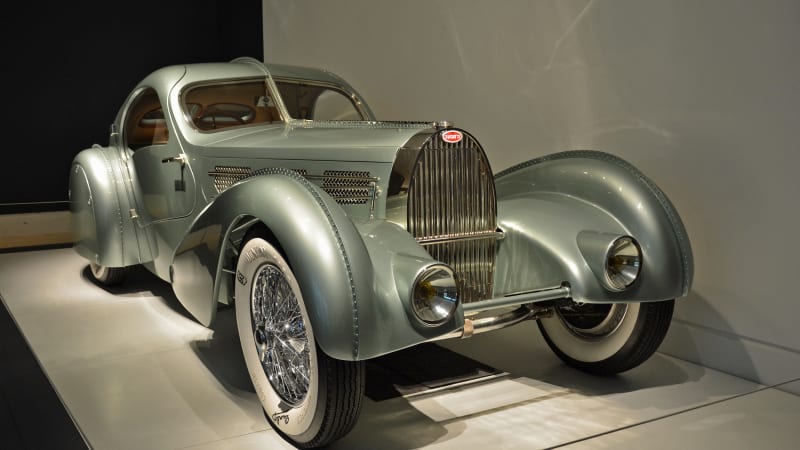Hand-made, magnesium-bodied 1934 Bugatti Aerolithe visits Jay Leno’s Garage
https://ift.tt/2LT2pNt

Rare, multi-million-dollar cars regularly cruise through Jay Leno’s garage, but some of the vehicles that pay him visits are more special than others. The 1934 Bugatti Aérolithe that Leno recently dedicated an episode to is the kind of machine that punctures the membrane separating cars and art.
The Aérolithe was designed by Jean Bugatti, the son of company founder Ettore, and its body was crafted entirely out of a magnesium alloy named Elektron in an effort to keep weight in check. As Leno points out, Elektron is spectacularly difficult to work with because it’s hard to shape, and it has an alarming tendency to catch fire. That’s why more than 1,200 exposed rivets helped keep the Aérolithe in one piece as it toured Europe in search of buyers.
Period records indicate potential owners admired the performance delivered by the 3.3-liter straight-eight engine – the Aérolithe could reach nearly 110 mph – but not enough to buy one. While it remained a one-off model, it inspired Bugatti to make the cheaper, heavier Type 57 Atlantic with an aluminum body. The two cars looked a lot alike.
The Aérolithe mysteriously disappeared before the beginning of World War II. Some sources believe it was parted out at the Bugatti factory in Molsheim, France, while others claim it was hidden and never taken out of storage. Regardless, its whereabouts remain unknown as of 2019.
The example Leno tours Los Angeles in is a reproduction painstakingly made from the ground up by the Guild of Automotive Restorers in Canada. David Grainer, the Guild’s founder, remembers the members of his team spent nearly a year figuring out how to recreate the Aérolithe before they started the project. They wanted to keep it as original as possible, so they used sheets of magnesium purchased for $3,000 a piece to make the body. Building a car from scratch (and by hand) is a challenging endeavor, but the Aérolithe project was even more complicated that it sounds because Grainer’s team had only nine usable photographs to work with. Blueprints were lost long ago.
Watch the full episode to learn more about the Aérolithe’s history, and to find out what it’s like to drive. For a look at a different side of Bugatti during the 1930s, read our story documenting the electric Type 56 that Ettore made in 1931 to drive around his property.
Auto Blog
via Autoblog https://ift.tt/1afPJWx
July 31, 2019 at 12:36PM